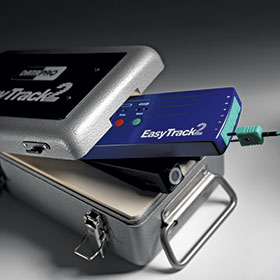

When employing heat treatment as part of a manufacturing operation, the critical information needed is the temperature of the product as it is taken through the heating process. Whether dealing with paint cure on a car body, heat treatment of an aerospace part or even preparing a fillet of steak at a fast food outlet, achieving the correct temperature for the correct time can significantly affect the quality of the product.
Measuring product time at temperature in heating applications has been an accepted industry practice for decades. The earliest temperature profiling systems plotted data on a chart that process engineers had to analyse laboriously. Today, profiling systems that are both sophisticated and easy to use can give a clear pass/fail finding. A profiling system generally consists of four elements:
• Thermocouples, which are either attached to the product or used to measure ambient air temperature
• A data logger, which captures data from the thermocouples
• A thermal barrier, which protects the data logger from the heat and cold
• A software package, which is used for data analysis
The temperature profiling process
Temperature profiling is the term used to describe the process of recording and interpreting the temperatures of products through a heating process. Temperature data are measured continuously using thermocouples connected directly to the product at different locations as it travels through the oven or furnace. The measured temperature readings are stored in a data logger, which moves along with the product and is protected from the hostile environment of the process by a thermally insulated box referred to as a thermal barrier.
Either during the process (using telemetry) or post-process, the profile data are retrieved from the data logger and transferred to a computer software package where they can be reviewed and analysed. Temperature data collected from the profiling operation provide a graph/profile showing what temperatures the product or oven experienced during the entire heating procedure. Such information creates a thermal fingerprint of the product and process, which is critical to the understanding of the heating operation. In its simplest form, this information tells how hot the product became, the time it took to get to that temperature, and how long it stayed at that temperature. Process engineers know what the perfect profile for their product should be. Variations from the ideal indicate a potential problem that can lead to or unacceptable product quality. Benefits of profiling include the following:
Control product quality: Increased scrap, rework or customer returns means something has gone wrong in the manufacturing operation. Knowing precisely what is happening to a product during production results in easy reduction of rejects, rework, scrap and returns.
Rapidly setup new processes: Routine monitoring of the process establishes a database of profile information, which will help develop new processes accurately and efficiently. This gives information on exactly what temperature settings and line speeds will result in the best quality product.
Find faults quickly: When a problem occurs because of improper heating, the cause and location can be spotted quickly. The profile information can then be analysed to determine the necessary corrective action and run follow-up profiles to prove the changes were successful.
Increase productivity: Analysis of temperature profiles will also show how and where operations can be optimised. By rebalancing the time at temperature and heat ratios, it is possible to increase line speed and product throughput; and by knowing exactly what is happening to the product in the process, it is possible to minimise time spent on test runs and process setups, allowing a greater number of profitable production runs.
Prove process control (QS/ISO9000): A profiling system, combined with a well-designed software package, will go a long way to assist in reporting process control adherence to authorities and customers.
Minimise fuel costs: Rising fuel costs can significantly impact the operating budget. Information retrieved from profiling can help cut down on excessive heat settings. Lower fuel costs mean higher profits, and reduced fuel consumption has a positive environmental impact.
Datapaq produces durable, accurate and user-friendly thermal profiling systems consisting of highly accurate temperature data loggers, rugged thermal barriers and easy-to-use analytical software. There are specially configured systems for metal heat treatment, automotive and other painting, food processing, plastics, ceramics, electronics and more. Customised systems are also easily configured for individual needs.
For more information contact R&C Instrumentation, +27 (0)11 608 1551, [email protected], www.randci.co.za
| Tel: | +27 11 608 1551 |
| Email: | [email protected] |
| www: | www.randci.co.za |
| Articles: | More information and articles about R&C Instrumentation |

© Technews Publishing (Pty) Ltd | All Rights Reserved